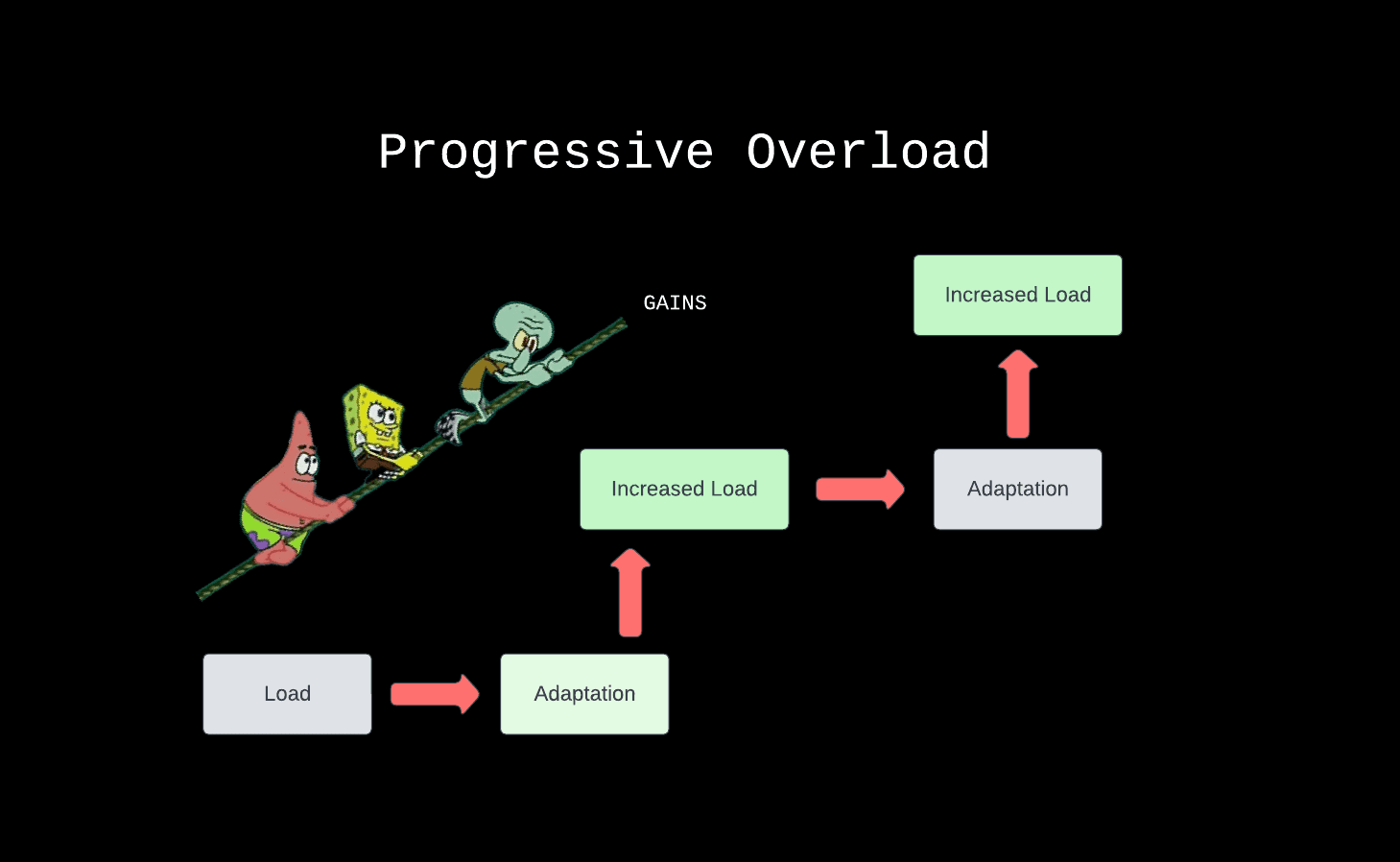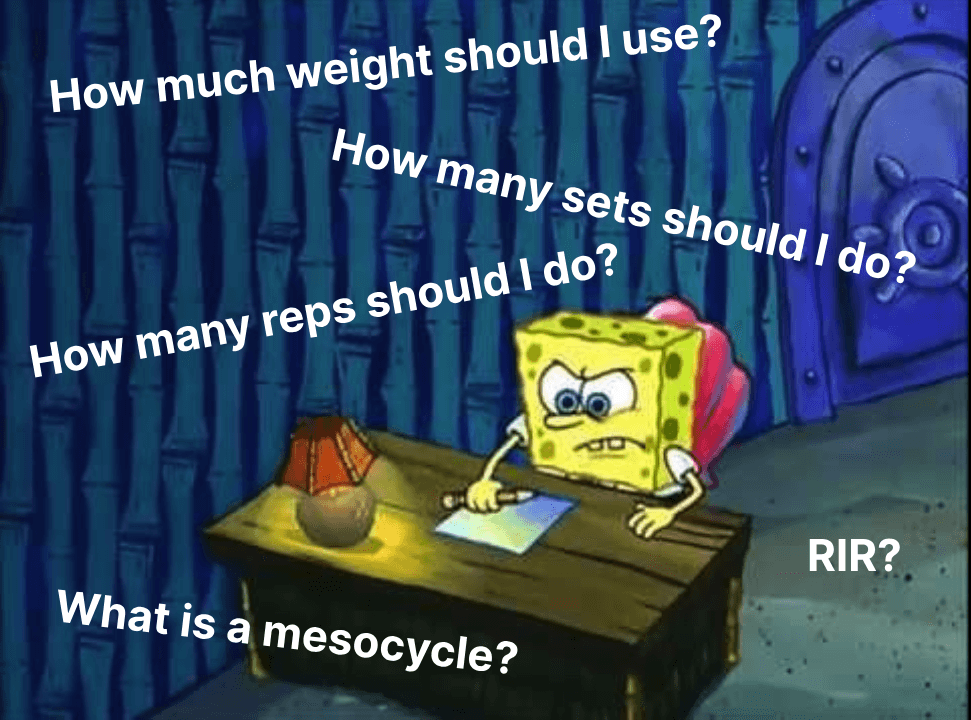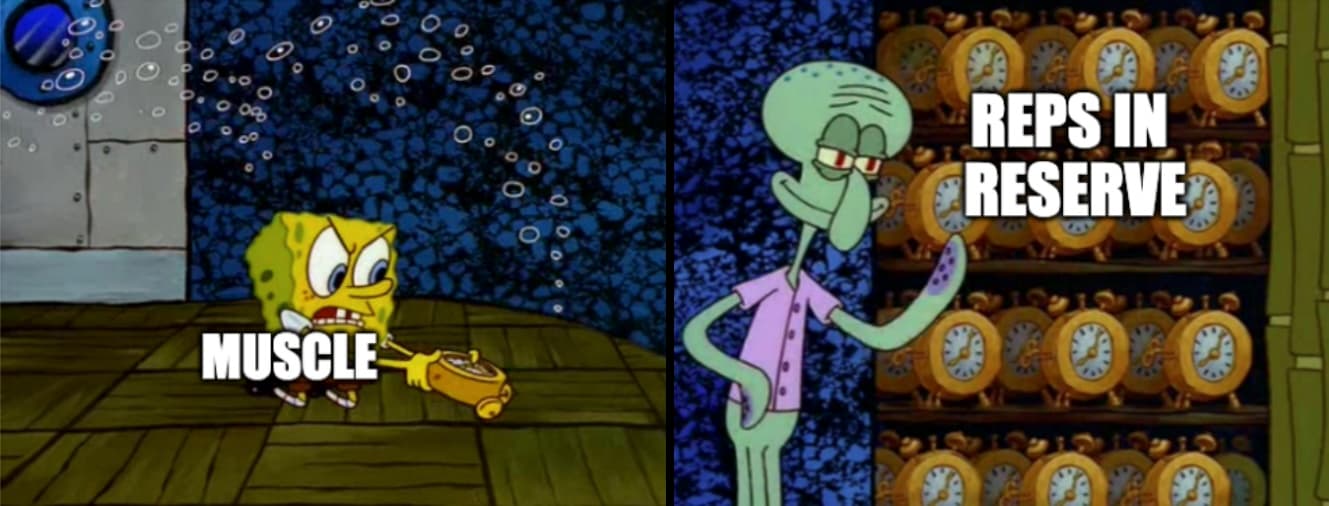Progressive Overload for Strength vs Hypertrophy



What is Progressive Overload?
Progressive overload is the gradual increase of stress placed on the body during training to force the body to adapt and grow. Basically, it's just the act of training harder over time so our muscles get bigger and stronger.
This is important because our muscles adapt to the stress we give it. If we don't increase the training stimulus, then our body thinks it's adapted enough, and doesn't grow. If our goals are strength and muscle size (hypertrophy), then we must progressively overload, requiring a greater stimulus, so the adaptation occurs and we get stronger and bigger.
Simply put, we need to train harder over time to see improvements. 📈
Example of Progressive Overload
- In the first week of your program, you do a 60 lb. dumbbell bench press for 3 sets of 8 reps.
- In the second week, you do a 60 lb. dumbbell bench press for 3 sets of 10 reps. That's +6 reps from last week!
- In the third week, you are able to do a 60 lb. dumbbell bench press for 3 sets of 12 reps. That's another +6 reps!
You are progressively overloading! ✅ 🥳
After a while, 12 reps becomes too easy, and it's time to add more weight.
- In the fourth week, you decide to use 65 lb dumbbells. You'll probably drop back down to 6 reps, and that’s totally normal! Over the next month you can increase the reps back up.
This example shows 2 progressive overload techniques -- increasing reps, and increasing weight.
Understanding Strength and Hypertrophy Adaptations
Muscle Hypertrophy 💪
Hypertrophy refers to an increase in muscle size, primarily through myofibrillar hypertrophy, where the number of myofibrils (the smallest contractile elements in muscle) increases, leading to larger muscle fibers and bigger muscles. This is a structural adaptation focused on growing muscle mass rather than maximizing performance.
Strength ⚖️
Strength is about maximizing the amount of load one can lift, often measured by a one-rep max (the heaviest weight you can perform for 1 rep). This involves not only muscle size but also neural adaptations, which include improved motor unit recruitment, coordination, and lifting technique. Strength training focuses on lifting the heaviest weights possible.
Training Differences Between Strength and Hypertrophy
We can train in specific ways to maximize our strength gains, or our hypertrophy gains. Here's how:
Exercise Selection
- Hypertrophy: Exercise selection is flexible; various exercises can target the same muscle group effectively.
- Strength: Specific exercises are crucial, as neural efficiency follows the principle of specificity. Training the exact lifts you want to improve is essential.
Rep Ranges and Load
- Hypertrophy: Effective across a wide range of rep ranges (6-25 reps), as long as sets are taken close to failure.
- Strength: Requires lifting heavy weights, ideally in the 1-5 rep range, to maximize neural efficiency.
Volume
Volume is the amount of work done in a workout. This is usually calculated by multiplying the weight lifted by the number of reps performed.
- Hypertrophy: More volume generally leads to faster muscle growth, given sufficient proximity to failure.
- Strength: Volume is less critical for neural adaptations; intensity (lifting heavy) is more important. However, sufficient volume is needed for long-term muscle growth, contributing to strength gains.
Rest Period Between Sets
- Hypertrophy: Rest periods (1-3 minutes) have minimal impact on muscle growth.
- Strength: Longer rest periods (3-6 minutes) are needed to minimize acute fatigue and maximize the ability to lift heavy loads.
Implementing Progressive Overload for Strength vs Hypertrophy
It turns out that if our goal is for hypertrophy, progressive overloading is different from if our goal is for strength.
For Strength
The goal is to lift more weight over time. This involves intentionally increasing the load lifted while working in lower rep ranges. A sample 12-week program might start with higher volume and moderate weights, gradually shifting to lower volume and heavier weights to peak in strength.
For Hypertrophy
The aim is to maximally stress the muscles, not necessarily to lift heavier weights. Over time, as muscles grow, they will naturally become stronger, allowing for heavier loads. Progressive overload should occur as a natural consequence of effective hypertrophy training, with slight improvements in performance reflecting muscle growth.
Tracking Progressive Overload
Tracking your strength is the most reliable way to make sure you're progressively overloading.
Progress is the tangible proof that you're building muscle and increasing your strength. It's challenging to see physical changes in muscle size week to week, so tracking your strength gains provides clear, measurable evidence of your growth and success.
We recommend using Hyperlog -- our workout tracker with superpowers. It is a free app that is easier than a notebook to record your workouts, and gives you powerful analytics and data, so you can make informed decisions for your workout programming.
Conclusion
Understanding the nuances between strength and hypertrophy training lets you design your workout program to effectively make use of progressive overload. By adjusting variables like exercise selection, rep ranges, volume, and rest periods, you can tailor your training to meet your specific goals.


